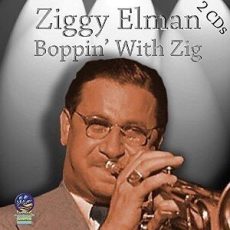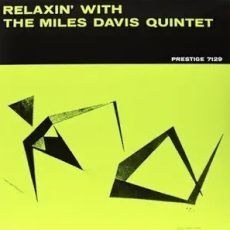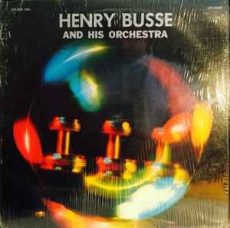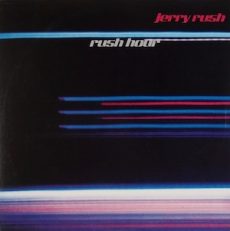
Daily Dose Of Jazz…
Ziggy Elman was born Harry Aaron Finkelman on May 26, 1914 in Philadelphia, Pennsylvania. but his family settled in Atlantic City, New Jersey when he was four. His father was a violinist who had hoped he would play violin and although he did learn to play violin, he preferred brass instruments. He began playing for Jewish weddings and nightclubs at age 15.
In 1932, made his first recording, playing the trombone. In 1936, he joined the Benny Goodman orchestra as a trumpeter, after playing briefly with a band led by Alex Bartha at Steel Pier in Atlantic City, where Goodman heard him. In 1938, while with Goodman, he got a contract with Bluebird, RCA’s cheaper label, to record 20 sides as Ziggy Elman and his Orchestra, although all the members were in Goodman’s band.
One original tune was Frailach in Swing, based on a 1918 recording of Der Shtiller Bulgar (The Quiet Bulgar) by Abe Schwartz. During the first half of 1939, Benny Goodman and His Orchestra was featured on the Camel Caravan radio show, with singer and songwriter Johnny Mercer as singer, writer of speciality numbers, and announcer. After leaving Goodman in 1940, Elman joined Tommy Dorsey and stayed until he was drafted in 1943. After he was discharged in 1946, he re-joined Dorsey for another year.
In 1956, he was asked to recreate a klezmer solo with the vocalist Martha Tilton for the movie, The Benny Goodman Story, but was unable to, his technique having since withered away. Elman appeared performing it in the film, but another trumpeter, Mannie Klein, played the solo on the soundtrack.
By the 1950s, the music had changed. Big bands had declined and for a time he switched to entertainment work. In this decade he appeared in films mostly as himself. In 1956 he had a heart attack, curtailing his music career. By the end of the 1950s he was financially ruined, and had to work for a car dealership. In 1961, it was revealed at an alimony hearing that he was virtually bankrupt. He later worked in a music store and gave trumpet lessons.
Trumpeter Ziggy Elman died of liver failure on June 26, 1968 at the age of 54 and was buried at Mount Sinai Memorial Park Cemetery in Los Angeles, California.
More Posts: history,instrumental,jazz,music,trumpet

Requisites
Relaxin’ With The Miles Davis Quintet ~ The Miles Davis Quintet | By Eddie Carter
In just two days in 1956, the Miles Davis Quintet recorded four remarkable albums, which are widely regarded as quintessential examples of hard bop and have endured as jazz classics over time. They fulfilled Davis’s contract with Prestige Records before moving to Columbia Records, his home for some of the most iconic music over the next thirty years. The albums are Cookin’ (1957), Workin’ (1959), Steamin’ (1961), and today’s focus, Relaxin’ With The Miles Davis Quintet (Prestige PRLP-7129), released in 1958. Miles Davis is on muted trumpet (tracks: A1 to A3, B1, B2), and trumpet (B3), John Coltrane is on tenor sax, Red Garland is on piano, Paul Chambers is on bass, and Philly Joe Jones is on drums. My copy is no. 535 of the Craft Recordings Limited Edition mono reissue (Prestige CR 00227).
The first side opener, If I Were a Bell by Frank Loesser, became a jazz standard after Davis’s rendition on this album. Miles snaps his fingers to set the rhythm ahead of the quintet’s medium-paced melody. The muted trumpet’s ideas unfold in the opening statement. John demonstrates his signature fluidity next. Red takes an energetic solo ahead of the theme’s reprise and a subtle conclusion. After two brief false starts, You’re My Everything by Mort Dixon, Harry Warren, and Joe Young begins with the quintet’s tender introduction, ahead of Miles’s delicately heartfelt melody and opening solo highlighting his more sentimental side. John executes a graceful, intimate statement, supported by the trio’s rich foundation, leading to a thoughtfully reflective finale from Davis.
The pace picks up noticeably for I Could Write a Book by Richard Rodgers and Lorenz Hart. The trio gets things started, leading to the quintet’s collective medium-fast melody. Miles takes off first with brisk, vibrant notes that set the mood. John fills the air with pure joy next, and then Red’s reading is so full of energy before the leader takes the song out, which ends abruptly. Sonny Rollins’s Oleo opens the second side with two false starts and some lighthearted studio chatter, ahead of Davis’s introduction and the quintet’s lively theme with John completing the melody. Miles goes first, delivering a spirited statement, then John soars into an energetic turn. Red concludes with an upbeat reading while Paul and Philly propel each soloist to new heights before the group’s brisk finish.
Up next is It Could Happen To You by Jimmy Van Heusen and Johnny Burke. The ensemble adopts a relaxed midtempo vibe with Miles leading the theme. He then continues with a sweet-toned first solo. John follows with a compelling statement that’s as cool as the other side of the pillow. Red brings out the liveliness in a cheerful interpretation, engaging beautifully with Paul and Philly in the subdued climax. Woody ‘n’ You by Dizzy Gillespie begins with Red’s brief introduction preceding the opening ensemble. Miles commands the lead solo with fiery passion on the open horn, paving the way for John’s high-energy performance. Davis and Jones share the song’s final moments in the closing chorus, culminating in a gentle fade. A few final words from Miles brings the jazz standard to a close.
Bob Weinstock oversaw the original session, and Rudy Van Gelder was the recording engineer. For this audiophile reissue, Mark Piro and Mason Williams took charge of production, and Bernie Grundman mastered the album from the original tapes. The record is pressed on 180-gram vinyl, using Neotech’s VR900 vinyl compound, and manufactured using a one-step lacquer process. The sound quality of this reissue is truly exceptional, offering a beautifully balanced soundstage that’s ideal for demonstration on a good mid-fi or high-end audio system. This limited-edition box set is 5,000 copies, each individually numbered and presented in a foil-stamped, linen-wrapped slipcase featuring an acrylic inset of the original artwork. The record is protected by an archival-quality, anti-static, non-scratching inner sleeve.
One of the highlights of this reissue is the inclusion of studio snippets, such as false starts and Miles’s conversations with Rudy Van Gelder. These moments offer the listener a unique sense of connection to the studio sessions, making them part of the event. On mid-fi or high-end audio systems, the tonal balance across highs, midrange, and low frequencies truly shines in a stunning soundstage. Relaxin’ With The Miles Davis Quintet is an excellent album of standards, showcasing inspired performances by every member. It’s a superb choice for enjoying at any time of the day or evening. I highly recommend it for a spot in your library, and I urge you to pick up a copy before it sells out, because you ain’t gettin’ mine!
~ Cookin’ With The Miles Davis Quintet (Prestige PRLP 7094), Steamin’ With The Miles Davis Quintet (Prestige PRLP 7200), Workin’ With The Miles Davis Quintet (Prestige PRLP 7166) – Source: Discogs.com
~ Oleo, It Could Happen To You, Woody’n You – Source: JazzStandards.com
~ If I Were A Bell, You’re My Everything, I Could Write A Book – Source: Wikipedia.org
© 2025 by Edward Thomas Carter
More Posts: choice,classic,collectible,collector,history,instrumental,jazz,music,trumpet

Daily Dose Of Jazz…
Henry Busse Sr. was born on May 19, 1894 in Magdeburg, Germany to a generational German Band family. He studied violin and then trumpet after a broken finger was set incorrectly. In 1912 at age 18 he ran away from the family farm outside of Magdeburg, where he had been forced to play trumpet in his uncle’s band.
Initially jumping ship in New York City and landing in the German ghettos there, unable to speak English, he found a job on a boat heading to California. He acquired some English on his trip in 1916 that found him in Hollywood working as an extra in Keystone Cop films and playing trumpet in a movie theater pit band.
In 1917, he played the trumpet with the Frisco Jass Band before forming his own band, Busse’s Buzzards which was the nucleus of the Paul Whiteman orchestra of the mid-1920s, and featuring Henry they made four sides in total. Being the subject of discrimination because of his German accent caused concern among those living in post-World War I America.
At one point, eight out of the top ten sheet music sales spots belonged to the band. During his peak with them, Busse was earning $350 weekly, while fellow band member Bing Crosby was earning just $150. Busse co-composed several of the band’s early hit songs, including Hot Lips with Gussie Mueller and Wang Wang Blues. The latter sold over one million copies, and was awarded a gold disc in 1920.
Throughout the 1920s he was concertmaster for the Whiteman Band, played alongside the Dorsey brothers, Ray Bolger, and formed the Shuffle Rhythm Band, which went on to enjoy great success in the 1930s and ’40s. A later group, The Henry Busse Orchestra. This group was more of a dance band than a jazz band and had a successful career.
Hitting his peak in 1930-45 playing dance music before the war, and swing during the war. He and his band appeared in two MGM color movies in 1935 called Starlit Days at the Lido, filmed at the Ambassador Hotel, along with Clark Gable and the studio’s stable of stars and in the movie Lady Let’s Dance.
Trumpeter Henry Busse and his Orchestra continued to record and perform up until his death on April 23,1955. at an undertaker’s convention at the Peabody Hotel in Memphis, Tennessee. He was playing with the Shuffle Rhythm Band.
More Posts: history,instrumental,jazz,music,trumpet

DASHILL SMITH & NAME THAT FEELING BAND
Multi-instrumentalist, singer/songwriter, producer, performer and actor Dashill Smith performs an eclectic array of genres including hip-hop, free jazz, funk, soul, blues, afro-beat. and more. He puts together freestyle rhymes, plays the trumpet, and improvises with the same mind frame as he does when I rhyme.
Smith performs with quite a few bands in town with his small unit, The Omega Level Squad, as well as The Biological Misfits, a band he co-Lead with actor, poet, and musician Malcom-Jamal Warner, and Mausiki Scales’ The Common Ground Collective. He also performed regularly for a few years with the legendary Jazz-Funk pioneer; vibraphonist Roy Ayers.
Tickets: $10.00 ~ $20.00 + $2.51 fee
More Posts: adventure,bandleader,club,genius,instrumental,jazz,music,preserving,travel,trumpet

Daily Does of Jazz…
Jerry Rusch was born on May 8, 1943 in St. Paul, Minnesota and studied at the University of Minnesota from 1962 to 1964, then played in an Army Reserve band before moving to Los Angeles, California in 1966.
Becoming a fixture in the city he played with Gerald Wilson from 1967, Ray Charles, Clifford Jordan, Joe Henderson, Willie Bobo, Louie Bellson, Teddy Edwards, Frank Foster, and Thad Jones/Mel Lewis. In Europe he played with Joe Haider’s Orchestra from 1982 to 1984.
As a sideman he recorded extensively among his credits are work with Charles Kynard, Benny Powell, Henry Franklin, Eddie “Cleanhead” Vinson and Stan Kenton, as well as Gladys Knight, the Rolling Stones, Smokey Robinson, Diana Ross, the Temptations, and many others.
Trumpeter Jerry Rusch, who was also credited as Jerry Rush and performed in the hard bop and post bop genres, died of liver cancer in Las Vegas, Nevada on May 5, 2003 at the age of 59, three days shy of his 60th birthday.
More Posts: history,instrumental,jazz,music,trumpet



